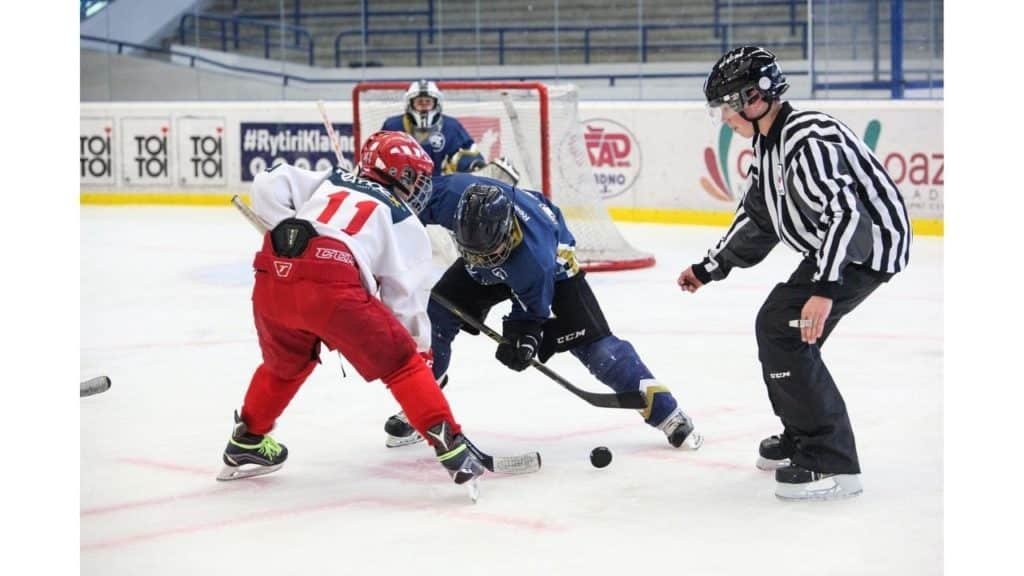High school hockey games typically last about 1.5 to 2 hours. This includes three periods of play, along with breaks and stoppages.
How Long are High School Hockey Games? Understanding the duration of high school hockey games can be helpful for players, parents, and fans. These games generally have three periods, each lasting 15 to 20 minutes. There are also intermissions between periods, adding to the total time.
Whether you’re planning to attend a game or just curious about the sport, knowing how long a game lasts can help you manage your time better. Plus, it can enhance your appreciation for the pacing and structure of hockey. Let’s dive deeper into the specifics of high school hockey game durations and what to expect during these exciting matches.

Credit: www.reddit.com
Game Duration
Understanding the game duration of high school hockey is important for players, parents, and fans. The length of a game can vary based on different factors. Here, we break down the key components of a high school hockey game.
Regulation Time
A high school hockey game typically consists of three periods. Each period is 15 to 17 minutes long. This can vary depending on the league or state regulations. The clock stops for penalties, goals, and injuries. This ensures fair play and accurate timing. Here is a table summarizing the regulation time:
| Period | Duration |
|---|---|
| First Period | 15-17 minutes |
| Second Period | 15-17 minutes |
| Third Period | 15-17 minutes |
Total regulation time can be 45 to 51 minutes. This does not include intermissions, which are usually 12 to 15 minutes long.
Overtime
If the game is tied at the end of regulation, there may be an overtime period. Overtime periods are usually shorter. They often last 5 to 8 minutes. The rules for overtime can vary. Some leagues use a sudden-death format. This means the first team to score wins. Others may use a shootout if no goals are scored in overtime.
- Overtime duration: 5-8 minutes
- Sudden-death format: First goal wins
- Shootout: If no goals are scored in overtime
Understanding these rules can help you better enjoy the excitement of high school hockey games.

Credit: en.wikipedia.org
Periods Breakdown
High school hockey games follow a specific structure, divided into three periods. Understanding the breakdown of periods helps fans and players know what to expect. Let’s dive into the details of each period.
Number Of Periods
High school hockey games consist of three periods. Each period is a segment of the game, providing breaks for players to rest and strategize.
Period Length
The length of each period in high school hockey is typically 15 minutes. This duration ensures the game is balanced, with enough time for action and recovery.
| Period | Length |
|---|---|
| 1st Period | 15 minutes |
| 2nd Period | 15 minutes |
| 3rd Period | 15 minutes |
Each period offers a fresh start, giving teams a chance to adjust their strategies.
Between periods, there are short intermissions. These breaks usually last around 10-15 minutes, allowing players to rest and coaches to give instructions.
Intermission Length
Intermissions are essential breaks during high school hockey games. These breaks give players a chance to rest and strategize. They also allow fans to stretch and grab refreshments. Understanding the length of these intermissions can enhance your game experience.
First Intermission
The first intermission comes after the first period. It usually lasts 15 minutes. This break lets players rest and coaches discuss strategies. Fans often use this time to visit concession stands or restrooms.
During this intermission, the ice might be resurfaced. This helps keep the playing surface smooth. The break is also a good time to check out any ongoing promotions or activities in the arena.
Second Intermission
The second intermission follows the second period. Like the first, it also lasts 15 minutes. This break is crucial for both teams. They can review their performance and make necessary adjustments.
Fans can interact with each other, discuss the game’s progress, and enjoy various entertainment options. The ice is usually resurfaced again, ensuring optimal playing conditions for the final period.
Remember, these intermissions are part of the game’s rhythm. They are planned to keep both players and fans engaged and comfortable.
Warm-up Time
Warm-Up Time is essential for high school hockey games. It prepares players physically and mentally. The time spent in warm-up can impact the game significantly. Let’s explore the warm-up routines, including the pre-game warm-up and the time between periods.
Pre-game Warm-up
High school hockey games typically start with a pre-game warm-up. Players usually hit the ice 15-20 minutes before the game starts. This time is crucial for stretching muscles and getting into the right mindset. Here’s a typical schedule:
- First 5 minutes: Light skating and stretching
- Next 5 minutes: Basic puck handling drills
- Last 5-10 minutes: Shooting practice and team drills
Coaches often use this time to address last-minute strategies. They ensure players understand their roles. The goal is to enter the game fully prepared and focused.
Between Periods
The time between periods is another key warm-up phase. High school hockey games have three 15-minute periods. Between each period, there is a 10-15 minute intermission. During this break, players have a chance to rest and rehydrate. Coaches give brief pep talks and make adjustments based on the game.
The schedule between periods usually looks like this:
| Time | Activity |
|---|---|
| First 5 minutes | Rest and rehydrate |
| Next 5 minutes | Coach’s talk and strategy adjustments |
| Last 5 minutes | Light stretching and preparation to re-enter ice |
The intermission warm-up keeps players ready and alert. It helps maintain their energy levels throughout the game.
Additional Delays
High school hockey games are thrilling but can face delays. These delays can extend the game’s duration. Two common causes of delays are penalties and injuries. Let’s dive into each.
Penalties
Penalties can disrupt the flow of the game. Players may commit fouls, leading to time in the penalty box. This affects the team’s strength on the ice. Referees need time to review and enforce penalties. This process can add minutes to the game.
Injuries
Injuries are another factor causing delays. When a player gets hurt, the game stops. Medical staff assess and treat the injured player. Sometimes, they need to remove the player from the ice. This can take several minutes. The safety of players is always a priority.

Credit: www.reddit.com
Frequently Asked Questions
How Long Does A High School Hockey Game Last?
A high school hockey game usually lasts about 1. 5 to 2 hours.
How Many Periods Are In A High School Hockey Game?
A high school hockey game has three periods.
How Long Is Each Period In High School Hockey?
Each period in high school hockey is 15 to 20 minutes long.
Is There A Halftime In High School Hockey?
No, there is no halftime. Only breaks between periods.
Do High School Hockey Games Have Overtime?
Yes, high school hockey games can have overtime if the score is tied.
How Long Is The Break Between Periods?
The break between periods is usually about 10 to 15 minutes.
Are High School Hockey Games Longer Than College Games?
No, college hockey games are often longer due to longer periods and more stoppages.
How Many Players Are On A High School Hockey Team?
There are usually 20 players on a high school hockey team, including goalies.
What Equipment Is Needed For High School Hockey?
Players need skates, sticks, helmets, pads, gloves, and uniforms.
Conclusion
High school hockey games typically last around 1. 5 to 2 hours. Knowing this helps plan your time better. Enjoy the excitement and energy of each match. Cheer for your team and enjoy the sport. Remember, the experience is just as important as the game.
Happy watching!




